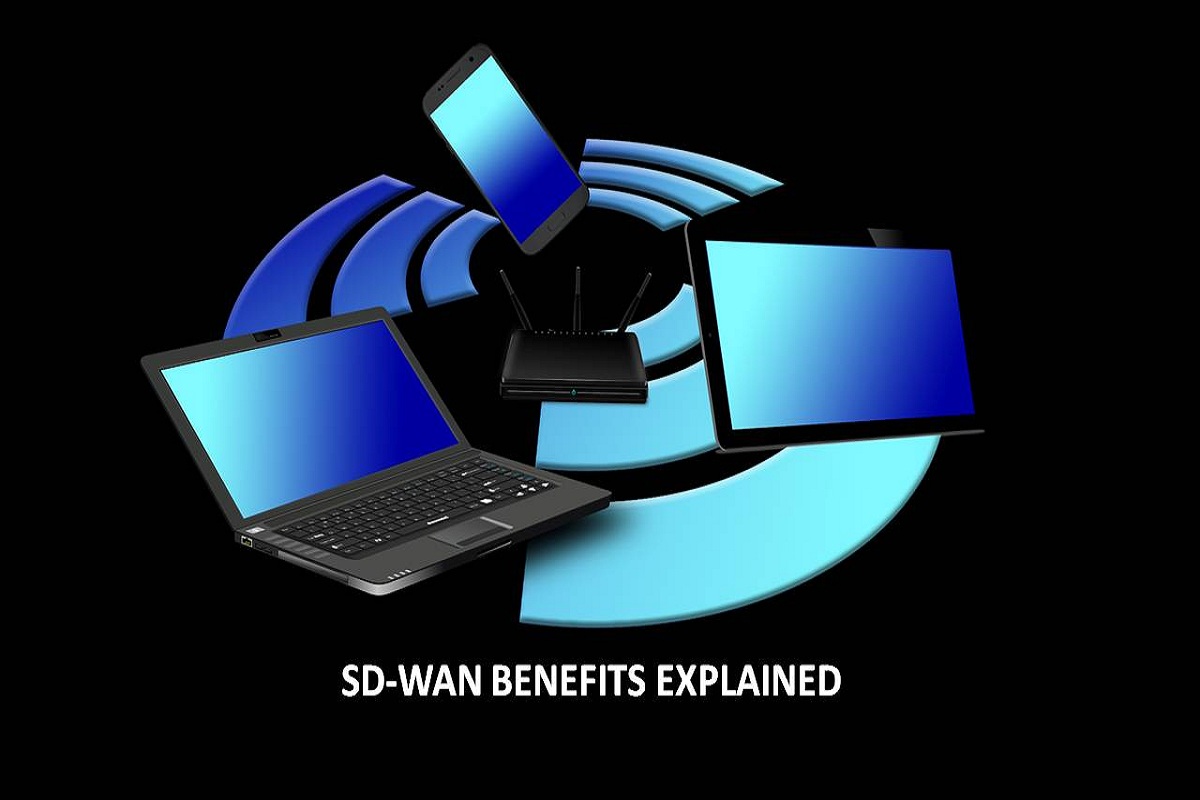Before discussing SD-WAN Benefits, let us Software-Defined technology applied to WAN (Wide Area Networks) networks is known as SD-WAN. And is being imposed, especially in those companies that have different locations and must be continuously connected. The resulting experience is like everyone working in the same location.
The exponential growth of information traffic and the needs of rapid access to it by business end-users is driving the implementation of software-defined WAN networks. In this blog we are going to discuss about SD-WAN benefits.
The network is a key resource within the corporate IT architecture. Traditional LAN and WAN networks increasingly support the distribution of unstoppable amounts of data and real-time access demands of corporate users.
Table of Contents
SD-WAN NETWORKS TO COVER ALL BUSINESS ENVIRONMENTS
SDN networks in WAN environments allow the joint design and management of an internal MPLS and VPN circuit environment. The public Internet, and even high-speed mobile wireless LTE communications. In this way, the areas in which the different business applications can be executed are contemplated.
Therefore, it is not surprising that organization’s interest in networks defined by WAN software does not stop growing. When considering the updating of network resources. In fact, the consulting firm Gartner estimates an annual growth of 59%, which would mean that the SD-WAN market moved around 1.3 billion dollars in 2020.
Also Read: What is a Network Security Key? – Definition, Features and Uses
Key SD-WAN Benefits
Flexibility
In present phase of the retail industry, companies need to know that their wide area network is flexible. It should be flexible enough relocate adn change when the business requires it.
Network virtualization allows businesses and organizations to create and maintain increasingly flexible network architectures. And with the implementation of SD-WAN solutions, retailers can simplify the addition or subtraction of aInternet or cloud services.
This allows them to try new services or expand them to different locations without the inconvenience that would be done with legacy systems.
Enhanced Connectivity
One of the major challenges facing the retail sector is the management of the networks. And many types of connections necessary to ensure that service levels and network operations remain optimal.
By using multiple broadbands, MPLS, and LTE networks combined in a fail-safe network, companies can ensure that the right levels of service can always be provided. Enhanced connectivity has been considered as one of the key SD-WAN Benefits.
Reduced Maintenance
Many legacy devices are gradually becoming incompatible with new technologies. And maintaining them can sometimes create a problem in itself. The implementation of SD-WAN reduces the space occupied by local hardware, which reduces maintenance costs and downtime.
Also updating the services to newer versions will be easier. When it comes only to the software since no truck rolls will be needed. By allowing the easy addition of future applications and services through software, rather than hardware. This way it helps retailers save time and maintenance.
Improved Bandwidth Efficiency
With applications that require intensive bandwidth use, such as digital signage and video surveillance. Companies should be able to use the bandwidth they have at their disposal in the most intelligent way possible.
A WAN solution capable of leveraging and reallocating bandwidth resources when necessary, would be of great benefit to any retail network.
By prioritizing bandwidth-intensive retail workloads, such as video conferencing, online training and VoIP execution. And the configuration and maintenance of an e-commerce site. An SD-WAN network can help improve the efficiency of the bandwidth of retail networks.
Enhanced Integration
These days increasingly advanced and cutting-edge technologies available every year for retailers. But where as retailers need simple and effective methods to integrate these technologies. Which can improve their operations and services.
In these times, disjointed and disconnected services that are difficult to learn or understand for employees will always put retailers at a disadvantage. SD-WAN provides the common network interface where mobile and cloud applications can access data in real-time.
This can also allow access to any authorized device, connected to the Internet or the network, to allow greater flexibility and accessibility.
Reducing Complexity
The complexity of the network is an increasingly common problem. As more and more companies and businesses use mobile and cloud-based applications. Which in turn has increased complexity within retail networks and other industrial networks.
Enhanced Security
In the retail sector, an enormous amount of sensitive, financial, and personal data travels through the network. Data is collected and stored daily, the security of this data and traffic is vitally important.
Since many legacy WANs lack the built-in basic security features, they cannot be trusted to protect a network adequately.
The use of SD-WAN networks instead of traditional network architectures can help retailers. It can help retailers by protecting heir commercial networks using standard SD-WAN security features. Such as encryption and tunneling, which can also work together with other additional security features.
Cost reduction
With traditional legacy systems, many are poorly equipped to provide modern services in their standard hardware forms.
To do this, they eliminate or virtualize various aspects and components that make up a wide area network. This means that these aspects of the network can be treated through software rather than hardware. It needs to be occasionally maintained, repair, and power.
Also Read: Top 10 Trends that Will Affect Enterprise Mobile App Development in 2019
Kamran Sharief
Related posts
Recent Posts
GameStop Near Me Wyoming, United States
GameStop Near Me Wyoming, United States – I suppose you are a game lover and love gaming, so you are searching…
Top 10 Electronics Stores Near Me In Alameda, California, USA
Top 10 Electronics Stores Near Me In Alameda, California, USA – Hey! Are you in need of electronics for your dream…



